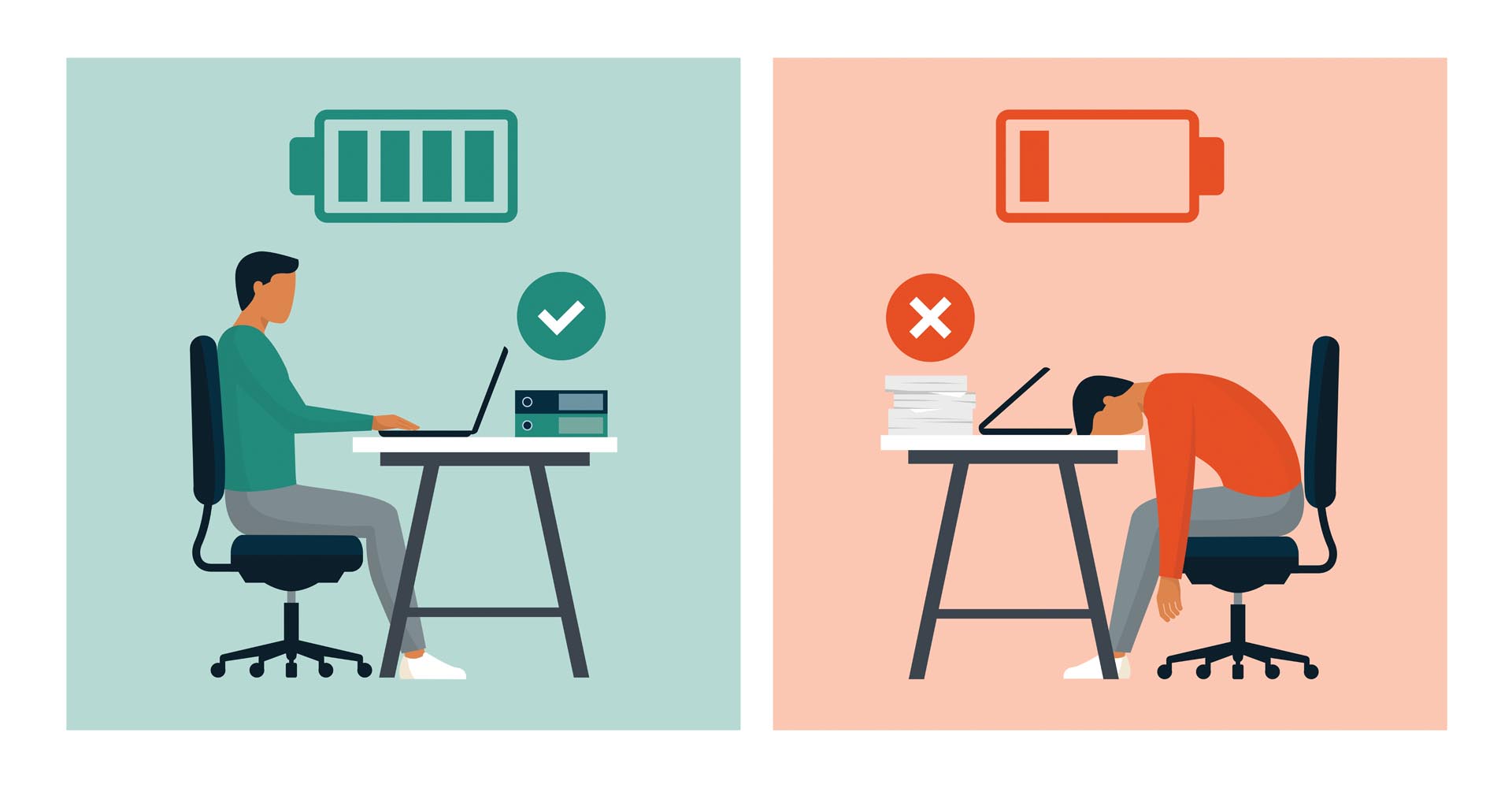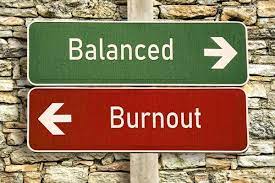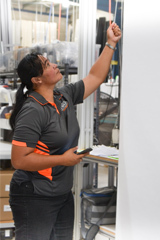Burnout is a state of physical and emotional exhaustion resulting from long-term stress. The condition leaves you feeling overwhelmed, emotionally flat and no longer able to cope with the demands of your job. It prevents you from being productive by sapping your energy levels, leaving you feeling hopeless, pessimistic and resentful. In 2019, WHO classified it as an ‘occupational phenomenon’, defining it as ‘a syndrome conceptualised as resulting from chronic workplace stress that has not been successfully managed.’
Burnout stems from an unhealthy work-life balance, being unable to disconnect during leisure time and a lack of boundaries. Not having boundaries gives us leeway to take on workloads and problems that are not ours to deal with. Add in financial worries, long hours without breaks and feeling pressurised by management, and you have the perfect recipe for overload and stress – the key drivers of burnout.

Recognising burnout
Today’s workforce is shouldering unprecedented demands as employees are expected to do more than ever with fewer resources. In these circumstances, burnout is prevalent, and, unfortunately, it does not resolve itself if ignored. Indeed, doing nothing is likely to cause further damage by causing serious physical and psychological disorders such as depression, heart disease and diabetes. Therefore, it’s vital that you act as soon as you recognise these signs of burnout:
- Feeling drained or tired most of the time
- Feeling overwhelmed by your work
- Self-isolation and withdrawal
- Having a constantly negative outlook
- Impostor Syndrome or self-doubt
- Frequent minor illnesses
- Changes in sleeping habits and appetite
- Using alcohol or drugs as a coping mechanism

Preventing burnout
There are many things you can do, including:
Exercise
This improves mental health by reducing anxiety, depression and a negative mood while improving self-esteem and cognitive function. Try building a short walk into your daily routine to reap the benefits of exercise without spending hours at the gym.
Eating a balanced diet
Eating well can help prevent burnout by supporting your immune system and boosting your mood. A balanced diet consists of lean protein, dairy, fruit and vegetables and whole grains. Avoid eating too much sugary or processed food; sugar is known to lessen the body’s ability to cope with stress, and multiple studies have linked it to depression.
Develop good sleep habits
Sufficient good quality sleep is essential to our overall well-being. Avoid caffeinated drinks too close to bedtime and banish screens from the bedroom. The blue light they emit blocks melatonin, which is needed to make you feel sleepy.
Creative time
Take up, or resume, a hobby, practise mindfulness, go for a walk or do anything that isn’t work-related.
Get help
If you are feeling stressed, make time to talk about your feelings with family and friends and approach your manager to discuss a more manageable workload. Seek advice if things don’t improve.

What can employers do to prevent employee burnout
While the above advice is focused on helping individuals, organisations need to recognise that burnout does not occur in a vacuum, and neither is it solely the responsibility of the individual employee. Indeed, it’s crucial that organisations play their part in preventing burnout by taking responsibility for managing stress in the workplace. Companies should support a good work/life balance by ensuring their staff:
- Work sensible hours
- Take proper lunch breaks
- Don’t work on weekends – especially from home
- Use their full holiday entitlement
Actions speak louder than words
Managers can do much to mitigate burnout by modelling appropriate behaviour. They can, for example, establish clear boundaries between work and home by implementing rules which they themselves abide by. Informing employees that there is no expectation that they should answer emails after hours won’t wash if managers then email those same employees late at night. Instead, make your expectations clear by practising what you preach. Employees will then understand that company culture not only accepts that they will take time out but also expects that they should do so.
Talk to employees on a regular basis
It’s pointless modelling positive behaviours in a bid to prevent burnout if employees are struggling with heavy workloads and insufficient time or resources. Listening to employees, understanding their problems and offering flexibility to overcome them is a must. It may be that you need to provide or divert further resources, help an employee to prioritise tasks, or redistribute the workload to ensure that individual employees are not overwhelmed by the demands of their job.
Don’t cause unnecessary work
Be aware that managers can sometimes add to employee workloads without meaning to. Ask yourself whether every meeting you schedule is necessary; consider the number of emails you send to employees and above all, avoid micromanagement.
Micromanagement
Managers often micromanage because they think it helps to maintain productivity. However, from an employee perspective, micromanagement leads to monotony and a lack of autonomy, both of which take their toll on employee wellbeing, increasing stress and making burnout more likely. Far from increasing productivity, long-term micromanagement causes a reduction in productivity owing to the breakdown of trust between employees and managers. Indeed, the negative effects of micromanagement are such that it is cited as one of the top three reasons people burn out and quit their jobs.

Summary
From an employer’s perspective, burnout is particularly bad news as it contributes directly to the Great Resignation. Nor is it good for the health of affected employees. However, the good news is that there are factors that can protect employees from burnout. These, include having a sense of purpose and belonging, and a management style that supports workers by giving them the autonomy to complete tasks without being constantly observed or controlled.
Managers who trust their teams and provide support, rather than control, will find that employees are more productive and less prone to burnout. Ultimately, leaders need to remember that burnout stems not from problems with individual employees, but from within the organisation itself. Therefore, it’s vital for all concerned that organisations not only recognise the early signs of burnout but also that they encourage and promote good mental health by having an open, honest and supportive organisational culture.
Article Source: https://eapassist.com.au/eap-assist/managing-burnout/















